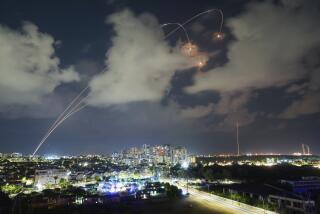Panels Skeptical of $46-Billion Cut in Early Phase of ‘Star Wars’
- Share via
WASHINGTON — Defense Department officials told skeptical lawmakers Thursday that they have slashed the cost of the first phase of a “Star Wars” defensive shield to $69 billion from $115 billion and that the system could be available within a decade.
The new figures resulted from a restructuring of the Strategic Defense Initiative, the formal name of President Reagan’s 5-year-old program to develop a high-tech shield against attack by Soviet nuclear missiles.
The large cost reduction was mainly achieved by scaling back the number of space-based interceptor rockets, Pentagon officials told a joint hearing of the Senate and House Armed Services committees.
‘Startling Change’
“This is a startling change,” said Robert Costello, undersecretary of defense for acquisition.
But lawmakers noted that they have often seen costs underestimated in the planning stage of a project and then increased after construction begins. They said also that they were concerned that the plans rely too heavily on key surveillance satellites, which would be crucial to the system’s ability to function once deployed.
Air Force Lt. Gen. James A. Abrahamson, head of the Pentagon’s Strategic Defense Initiative Organization, said a layered first-phase defense could be in place in the late 1990s, although parts might be ready sooner.
The first phase of the SDI system consists of orbiting garages containing small rockets that can knock out a rising Soviet missile, ground-based rockets to hit missiles and warheads later in flight, sensing and battle management satellites and ground-based sensors.
Point to Advances
Abrahamson and Costello said that technical advances had allowed them to cut the number of projected orbiting garages to 150 from 300. At the same time, they raised the number of ground-based interceptors to about 1,700 from about 1,000.
In addition, some sensing and communications functions were shifted to the satellites.
Sen. Sam Nunn (D-Ga.), chairman of the Senate Armed Services Committee, said he doubted the cost figures, even though Costello described them as realistic and subject to further lowering as the program progressed.
“I guess you have to pardon us if we express some skepticism on the cost,” Nunn said. “Every time we get into the selling stage, the charts go down; and when we get into the building stage, the costs go up.”
More to Read
Sign up for Essential California
The most important California stories and recommendations in your inbox every morning.
You may occasionally receive promotional content from the Los Angeles Times.













